General Info
Initial Founders: Richard and Maurice McDonald (Ray Kroc bought it in 1961)
CEO: Chris Kempczinski (55 yo)
Started in: 1940 in California
Employees: Approx. 200,000 employees globally
Financial Info
Revenue/Quarter: Approx $6.49 billion (as of Q2 FY24) (flat on 2Q 2023)
Net Income/Quarter: Apx $2.02 billion (as of Q2 FY24)(down 13% from 2Q 2023)
Profit margin: 31% (as of Q2 FY24) (down from US$3.17 in 2Q 2023)
About McDonald’s
McDonald’s stands as a global powerhouse in the fast-food industry, with over 38,000 locations in more than 100 countries, serving 69 million customers daily. Established in 1940, the company has evolved from a single drive-in restaurant to a multibillion-dollar empire that epitomizes scalability and brand consistency. What sets McDonald’s apart is its ability to adapt to local markets while maintaining a universal appeal. From the iconic Big Mac to region-specific offerings like the McAloo Tikki in India, McDonald’s has mastered the art of balancing global brand identity with local tastes.
The brand’s success is underpinned by its innovative marketing strategies and relentless focus on customer experience. McDonald’s has pioneered the use of data-driven insights to tailor its marketing campaigns, resulting in a 2023 global revenue of $23.18 billion. By harnessing the power of digital platforms, McDonald’s has cultivated a massive online presence, with millions of followers across social media channels, making it a leader in digital engagement. The company’s strategic use of limited-time offers, loyalty programs, and collaborations with celebrities like Travis Scott has further solidified its connection with younger audiences, driving brand loyalty in an increasingly competitive market.
In addition to its marketing prowess, McDonald’s has also been a trailblazer in operational efficiency. The brand’s supply chain management is a benchmark for the industry, with the company investing heavily in technology to ensure speed and consistency across all its locations. McDonald’s “Experience of the Future” initiative, which includes digital ordering kiosks, table service, and mobile app integration, has redefined convenience in the fast-food sector, enhancing customer satisfaction and increasing average order values.
As McDonald’s continues to innovate and expand its global footprint, it remains a case study in how to build and sustain a brand that resonates across cultures and generations. Its ability to marry tradition with innovation, while keeping a pulse on consumer trends, makes McDonald’s not just a fast-food giant but a model of enduring business success.
Backstory and how did they come up with this idea?
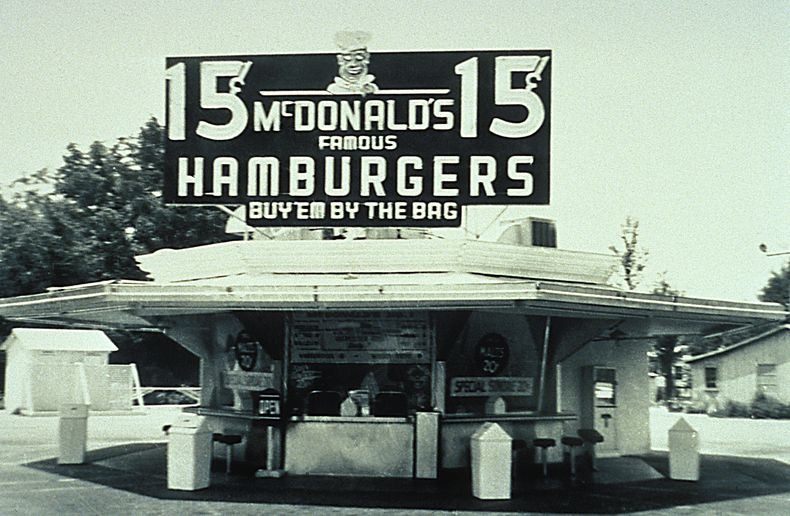
The Birth of McDonald’s: The McDonald Brothers’ Vision
In 1940, Richard and Maurice McDonald opened a small drive-in restaurant in San Bernardino, California, unknowingly laying the foundation for what would become a global fast-food empire. The McDonald brothers had a simple yet revolutionary idea: streamline the food preparation process to maximize efficiency and minimize customer wait time. They developed the “Speedee Service System,” which introduced the concept of assembly-line food production, a radical shift from the standard dine-in experience of the time. This innovation allowed them to serve high-quality food quickly, and their restaurant became a hit with the growing car culture in post-war America.
By 1953, the McDonald brothers had successfully franchised their concept, with their first franchise opening in Phoenix, Arizona. They even adopted the now-famous Golden Arches as part of their brand identity, which quickly became a symbol of their burgeoning success. However, while the brothers were successful on a regional level, they lacked the ambition to take their concept nationwide. This is where Ray Kroc entered the picture.
Ray Kroc: The Architect of a Global Brand
In 1954, Ray Kroc, a Multimixer milkshake machine salesman, visited the McDonald brothers’ restaurant after noticing they had ordered eight of his machines—a rare occurrence. Impressed by the efficiency and potential of their operation, Kroc saw an opportunity that the McDonald brothers had overlooked. In 1955, Kroc opened the first McDonald’s franchise under his ownership in Des Plaines, Illinois, and established the McDonald’s Corporation. Unlike the McDonald brothers, Kroc had a grand vision for the brand and was determined to see it through.
Kroc’s aggressive expansion strategy focused on uniformity and consistency. He introduced strict guidelines for food preparation, portion sizes, and restaurant layouts, ensuring that customers would receive the same experience regardless of which McDonald’s they visited. By 1961, Kroc had bought out the McDonald brothers for $2.7 million (equivalent to around $25 million today), a deal that allowed him full control of the brand. Under Kroc’s leadership, McDonald’s grew exponentially, with the 1,000th restaurant opening in 1968.
Kroc’s relentless pursuit of growth paid off. By the 1970s, McDonald’s had become a household name, expanding internationally with its first overseas restaurant opening in Canada in 1967. The brand’s global reach was further solidified in 1984, when McDonald’s opened its 10,000th restaurant. At the time of Kroc’s death in 1984, McDonald’s had become the largest restaurant chain in the world, with annual sales exceeding $8 billion and serving over 20 million customers daily.
The Evolution of McDonald’s: Adapting to the Times
The 1980s and 1990s saw McDonald’s continue to dominate the fast-food landscape, but the company also faced new challenges. Health trends began to shift consumer preferences, and competition grew fiercer. McDonald’s responded by diversifying its menu, introducing salads, fruit, and the McChicken sandwich in 1980 to appeal to health-conscious customers. The company also embraced global expansion more aggressively, opening restaurants in markets like Russia and China, which were previously closed off to Western brands.
In 1996, McDonald’s set another milestone by becoming the first restaurant to serve 100 billion hamburgers, a testament to its global reach and popularity. By the late 1990s, the brand had over 25,000 restaurants worldwide and had achieved a remarkable feat: it was said that a McDonald’s opened somewhere in the world every five hours.
The Digital Age: Reinventing McDonald’s for the 21st Century
As McDonald’s entered the 21st century, it faced the challenge of staying relevant in an increasingly digital world. The rise of fast-casual dining and growing concerns about health and sustainability forced McDonald’s to rethink its strategy. The company introduced healthier menu options, including the Fruit & Maple Oatmeal in 2011, and committed to sourcing sustainable ingredients. In 2015, McDonald’s announced that it would only use cage-free eggs by 2025, reflecting a broader shift towards ethical sourcing.
McDonald’s also embraced technology, launching the McDonald’s app in 2014 and rolling out self-service kiosks in restaurants worldwide. The company’s “Experience of the Future” initiative, which includes digital ordering, table service, and an upgraded restaurant environment, was a direct response to changing consumer expectations. These efforts have paid off, with McDonald’s reporting $23.18 billion in revenue in 2023, despite the challenges posed by the COVID-19 pandemic.
McDonald’s Franchise System: The Secret Sauce of Global Growth
McDonald’s isn’t just about burgers and fries; it’s about a business model that’s been replicated thousands of times across the globe. The franchise system is the real engine behind McDonald’s explosive growth, allowing the company to scale rapidly while maintaining a consistent customer experience. Let’s break down how this system works and why it’s been so successful.
The Franchise Model: Empowering Entrepreneurs
- How It Works: McDonald’s franchisees invest between $1 million and $2.3 million to open a new location, depending on factors like location and size. Once up and running, franchisees pay ongoing fees, including a 4% service fee on gross sales and rent. The genius of the model is that while franchisees own and operate their restaurants, McDonald’s often owns the land and building, ensuring a steady stream of income from rent.
- Consistency and Control: Even though franchisees have the freedom to run their own operations, McDonald’s maintains strict control over quality and service. This ensures that no matter where you are, a Big Mac tastes the same, whether it’s in California or Beijing. As one franchisee said, “We’re independent business owners, but we’re part of something much bigger. The system only works if we all stick to the same high standards.”
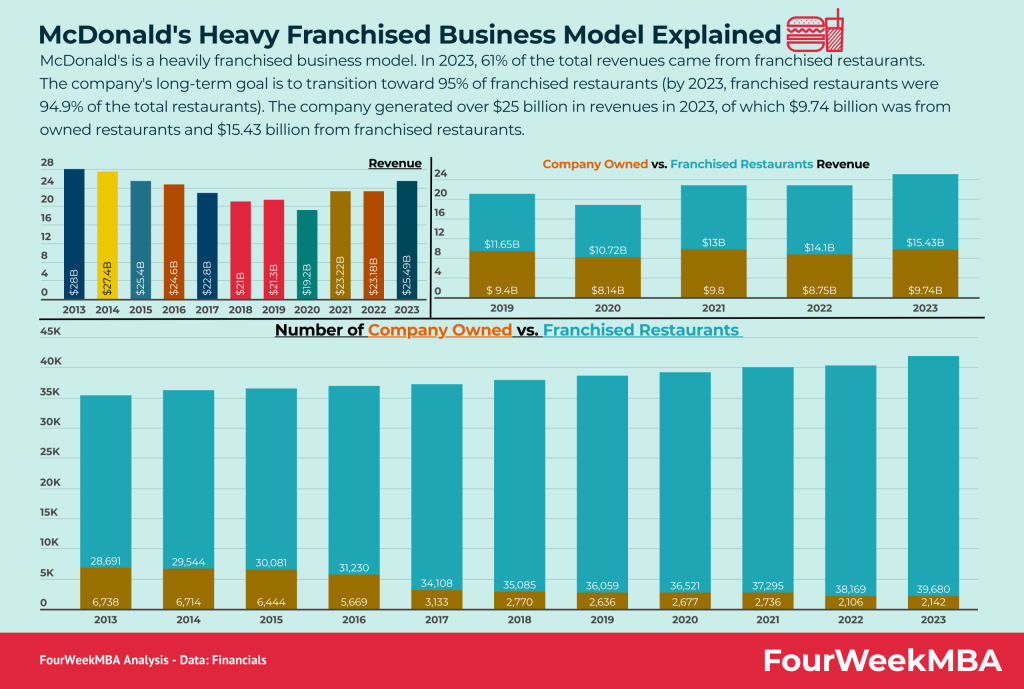
Strategic Expansion: From Local to Global
- U.S. Expansion: Ray Kroc, the mastermind behind McDonald’s franchising, strategically targeted key states like California, Illinois, and Texas in the 1950s and 60s. By focusing on high-traffic areas and family-friendly communities, Kroc laid the groundwork for McDonald’s to become a household name. By 1965, just ten years after Kroc opened his first franchise, McDonald’s had over 700 locations nationwide.
- International Growth: The franchise model wasn’t just a U.S. phenomenon. McDonald’s used it to conquer international markets too. The first international franchise opened in Canada in 1967, followed by Puerto Rico the same year. Today, McDonald’s operates in over 100 countries, with international sales contributing significantly to its $23.18 billion in global revenue in 2023. Markets like Japan and China, where local franchisees adapt the menu to suit cultural tastes, have been particularly successful.
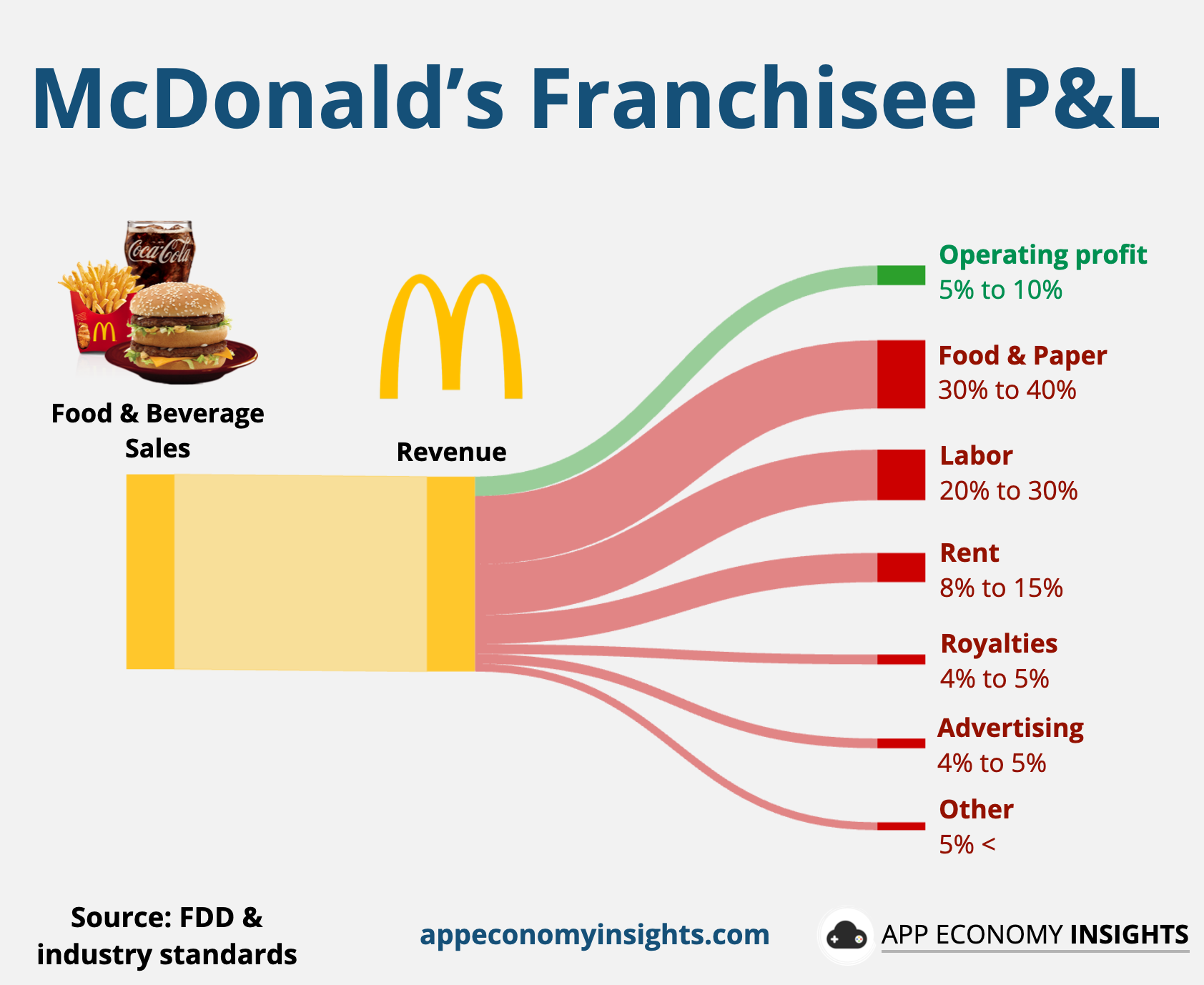
Innovation Through Franchising
- Local Adaptation: One of the strengths of McDonald’s franchise system is that it encourages innovation at the local level. For instance, the Filet-O-Fish was created by a franchisee in Cincinnati to cater to the local Catholic population who avoided meat on Fridays. This item has since become a staple on the global menu. “Franchisees know their markets better than anyone,” a McDonald’s executive once said. “Their innovations help us stay relevant.”
- Shared Success: Over 90% of McDonald’s restaurants are operated by franchisees, making them critical to the brand’s success. This model has allowed McDonald’s to scale rapidly without bearing the full financial burden of opening and operating each new location. Instead, franchisees share the risk—and the rewards. As a result, McDonald’s has been able to grow exponentially, with over 38,000 locations worldwide.
McDonald’s Branding and Marketing Strategies: A Winning Formula

McDonald’s didn’t become the world’s most iconic fast-food brand by accident. They’ve mastered the art of branding and marketing, creating strategies that resonate with customers around the globe. Let’s break down some of their most effective tactics, how they executed them, and what they mean for the company’s bottom line.
The Golden Arches: A Symbol of Trust
- Consistency: The Golden Arches are more than just a logo—they’re a promise. Whether you’re in Paris, Texas, or New York, France, you know exactly what you’re getting. This consistency is what keeps customers coming back. As one McDonald’s franchisee put it, “We’re in the trust business. Our customers trust that no matter where they are, they’ll get the same quality.”
- Revenue Impact: This brand trust isn’t just about good vibes; it translates into serious money. In 2023, McDonald’s brought in $23.18 billion globally. A large chunk of this comes from the sheer predictability of their experience, driving repeat business across the world.
Marketing Campaigns: Simple, Relatable, and Global
- “I’m Lovin’ It”: Introduced in 2003, this slogan became more than just a tagline—it became a global anthem. The campaign was crafted to be universally understood and felt, which is why it’s been running for over two decades. According to a McDonald’s marketing executive, “It’s simple, it’s human, and it’s true. That’s why it works everywhere.” This campaign alone has been worth billions in brand equity.
- The Travis Scott Meal: In 2020, McDonald’s teamed up with rapper Travis Scott for a limited-time meal that took social media by storm. Not only did this campaign resonate with younger audiences, but it also drove a 4.6% sales increase in the U.S. in just one month, contributing to an impressive $5.42 billion in quarterly revenue. This shows how McDonald’s leverages pop culture to stay relevant.
Targeting Every Audience
- Happy Meal: Introduced in 1979, the Happy Meal is a marketing genius move. It’s more than just food—it’s an experience, especially for kids. Over 1 billion Happy Meals were sold in 2021 alone. These meals aren’t just keeping kids happy; they’re creating lifelong customers.
- Health-Conscious Options: Recognizing the shift towards healthier eating, McDonald’s introduced salads, fruit, and even the McPlant burger. This move wasn’t just about broadening the menu—it was about broadening the customer base. And it worked. By offering healthier choices, McDonald’s maintained its appeal across different demographics, helping fend off criticism and attracting new customers focused on healthier living.

Digital Marketing: Staying Ahead of the Curve
- The McDonald’s App: Launched in 2014, this app is a game-changer. It makes ordering easier and keeps customers engaged with personalized offers. In 2023 alone, digital sales (including app and kiosk orders) accounted for over 40% of total sales in McDonald’s top six markets, which translates to billions in revenue.
- Social Media Presence: McDonald’s knows how to work social media. Their witty tweets and relatable Instagram posts keep them in the spotlight. Remember the “All Day Breakfast” tweet from 2015? It got over 300,000 retweets! As one social media manager at McDonald’s said, “We’re always listening to our customers. If they’re on social, we’re on social.”
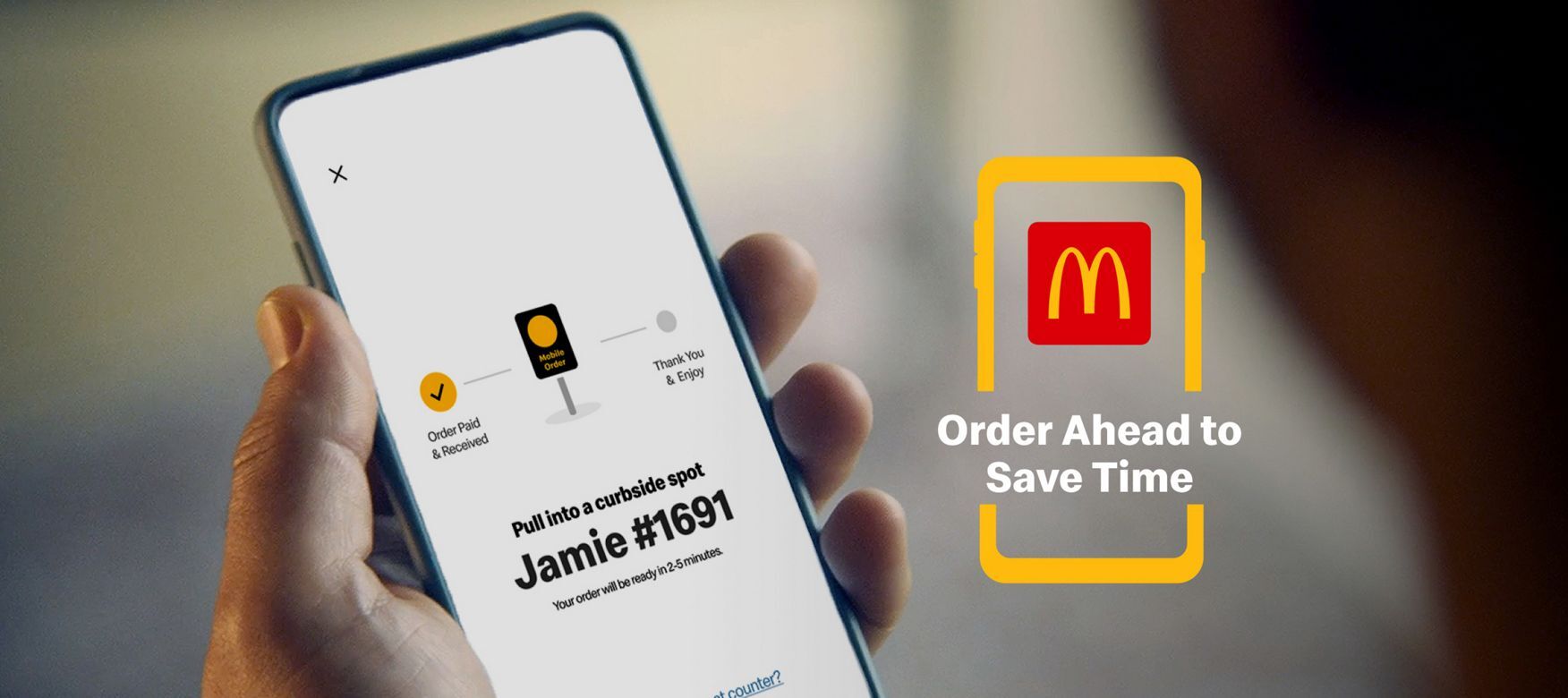
What’s the Takeaway?
McDonald’s success in branding and marketing isn’t just about being big; it’s about being smart. They know how to create campaigns that connect, products that appeal, and experiences that customers trust. From the Golden Arches to the latest social media trend, McDonald’s has proven that when it comes to fast food, they’re not just serving meals—they’re serving a brand that customers love, time and time again.
And as they continue to innovate, there’s no doubt that McDonald’s will keep finding new ways to turn their marketing strategies into billions of dollars in revenue. Whether it’s through catchy slogans, celebrity partnerships, or digital innovation, McDonald’s knows exactly how to keep the world lovin’ it.
McDonald’s Menu Innovation: The Key to Staying Relevant
McDonald’s has mastered the art of menu innovation, ensuring that it stays at the forefront of the fast-food industry. By constantly adapting and introducing new items, McDonald’s keeps customers excited and draws in new crowds. Let’s explore how their menu strategies have played a crucial role in their success.
Adapting to Local Tastes
- Cultural Customization: McDonald’s understands that one size doesn’t fit all, especially when it comes to food. In India, where beef is off the menu for many, McDonald’s introduced the McAloo Tikki, a potato-based burger that became a hit. Similarly, in Japan, you’ll find the Teriyaki Burger, catering to local tastes. This ability to adapt has allowed McDonald’s to thrive in diverse markets, contributing to its global dominance.
- Revenue Boost: Localized menus aren’t just about making customers happy—they’re about driving sales. In China, for example, where rice is a staple, McDonald’s introduced the Rice Burger. This innovation helped McDonald’s tap into the local market. For example, McDonald’s sales in China accounts for about 4% of the chain’s total revenue.

Classic Staples with a Twist
- The Big Mac: Introduced in 1967, the Big Mac has become an icon. But what makes it special is its consistency and the occasional twist. For instance, in 2020, McDonald’s introduced the Double Big Mac in certain markets. This move reinvigorated interest in the classic, driving up sales. As one McDonald’s executive noted, “Sometimes, all you need is a little twist on a classic to get people excited.”
- Limited-Time Offers (LTOs): McDonald’s has a knack for creating buzz with limited-time offers. Items like the McRib, which only appears on the menu sporadically, generate huge demand when they do. The McRib’s 2020 return led to a 5.5% increase in U.S. same-store sales in Q4, showing how powerful these limited-time offers can be.
McDonald’s Pricing Strategy: Balancing Value and Profit
McDonald’s pricing strategy is a critical component of its success, carefully crafted to attract a broad range of customers while maintaining profitability. By offering a mix of value items, premium products, and localized pricing, McDonald’s has managed to stay competitive in the fast-food industry. Let’s dive into how their pricing strategy works and why it’s been so effective.
Value Menu: Attracting Budget-Conscious Consumers
- Dollar Menu Evolution: The Dollar Menu, introduced in 2002, was a game-changer for McDonald’s. By offering popular items at just $1, McDonald’s attracted price-sensitive customers and increased foot traffic. As one McDonald’s manager put it, “The Dollar Menu brought in customers who might not have visited otherwise, and once they’re here, they often buy more.”
- Impact on Sales: The value menu has consistently driven sales, particularly during economic downturns when consumers are more focused on getting the most for their money. In 2020, during the pandemic, McDonald’s saw an uptick in sales of value items, contributing to the company’s ability to weather the storm and maintain a strong revenue stream.
Tiered Pricing: Catering to Different Customer Segments
- Premium Offerings: While the value menu attracts budget-conscious consumers, McDonald’s also offers premium items like the Signature Crafted Recipes line and the Big Mac. These higher-priced items cater to customers willing to spend more for a better experience. This tiered pricing strategy allows McDonald’s to cater to different customer segments without alienating any group.
- Revenue Boost: The introduction of premium items has been particularly successful in increasing the average transaction size. For example, the launch of the Buttermilk Crispy Chicken sandwich in 2015 was a hit, leading to a 4.1% increase in same-store sales in the U.S. that quarter. By offering a mix of low-cost and premium options, McDonald’s maximizes revenue from a diverse customer base.
Localized Pricing: Adapting to Markets
- Market-Specific Pricing: McDonald’s understands that pricing needs to reflect the local economic conditions. In developing countries, McDonald’s offers items at lower prices to remain competitive, while in wealthier markets, prices are adjusted accordingly. For instance, in India, the McAloo Tikki is priced at an affordable ₹29 (about $0.35), making it accessible to a broad audience.
- Strategic Adjustments: In 2023, McDonald’s strategically adjusted prices across various markets in response to inflation. Despite these increases, the company maintained strong customer loyalty by ensuring that the perceived value of the meals outweighed the cost. This strategy helped McDonald’s maintain its revenue growth even in challenging economic conditions.

McDonald’s Technological Innovation: Leading the Digital Fast-Food Revolution
McDonald’s may be famous for its burgers and fries, but it’s their embrace of technological innovation that has truly set them apart in the fast-food industry. From drive-thru efficiency to mobile apps and AI-powered solutions, McDonald’s has leveraged technology to enhance customer experience, streamline operations, and boost sales. Here’s how they’ve done it.
Drive-Thru Revolution: Faster and Smarter
- Automated Drive-Thrus: McDonald’s was one of the pioneers in introducing drive-thrus in the 1970s, and they’ve been innovating ever since. In recent years, McDonald’s has implemented automated order-taking systems that use AI to recognize repeat customers and suggest their favorite orders. This has led to a significant reduction in wait times, with some locations reporting up to a 30% increase in order processing speed.
- Impact on Sales: With drive-thrus accounting for nearly 70% of McDonald’s U.S. sales, these technological advancements have had a direct impact on revenue. In 2022, McDonald’s reported that drive-thru sales contributed to a 6% increase in same-store sales. As one McDonald’s operations manager noted, “The faster we can serve our customers, the more sales we can process. It’s a win-win for everyone.”
Mobile Ordering and Delivery: Convenience at Your Fingertips
- McDonald’s App: The McDonald’s mobile app has been a game-changer, allowing customers to order ahead, customize their meals, and earn rewards. Launched in 2015, the app quickly became one of the most downloaded fast-food apps, with over 100 million downloads by 2023. This digital shift has made ordering more convenient, especially for younger, tech-savvy customers.
- Revenue Boost: The convenience of mobile ordering has driven significant growth in digital sales. In 2023, McDonald’s reported that digital orders (including mobile and delivery) accounted for over 25% of global sales, contributing to their strong financial performance. “Our app isn’t just a convenience—it’s a key driver of our growth strategy,” said a McDonald’s digital marketing executive.
AI and Automation: The Future of Fast Food
- Dynamic Pricing: McDonald’s has started using AI to optimize pricing based on demand, weather, and local events. This dynamic pricing strategy helps maximize profits by adjusting prices in real-time to reflect current conditions. For example, if a sports event is happening nearby, McDonald’s might slightly increase prices, knowing that demand will be higher.
- AI-Powered Kitchens: In 2021, McDonald’s began testing AI-powered kitchens that use machine learning to improve order accuracy and efficiency. These kitchens can predict peak times and automatically adjust cooking schedules, ensuring that food is fresh and ready when customers arrive. “AI is helping us run smarter kitchens, which means better service and happier customers,” said a McDonald’s tech lead.
Kiosks and Self-Service: Enhancing the In-Store Experience
- Self-Service Kiosks: McDonald’s introduced self-service kiosks in 2015, allowing customers to place their orders without waiting in line. These kiosks not only reduce wait times but also encourage customers to customize their orders, often leading to higher ticket sizes. On average, stores with kiosks have seen a 20% increase in average order value.
- Customer Satisfaction: The kiosks have also improved customer satisfaction by giving them more control over their orders. “Customers love the ability to customize their meals and take their time deciding,” said a McDonald’s store manager. The increase in order size combined with improved customer experience has made kiosks a key part of McDonald’s in-store strategy.
McDonald’s Corporate Social Responsibility (CSR): Leading with Purpose
McDonald’s isn’t just about serving billions of burgers—it’s also about making a positive impact on the communities it serves. Through its Corporate Social Responsibility (CSR) initiatives, McDonald’s has committed to sustainability, charitable efforts, and ethical practices, ensuring that its global footprint is as positive as possible. Here’s how McDonald’s is leading with purpose.
Sustainability Initiatives: Building a Greener Future
- Commitment to Sustainable Sourcing: McDonald’s has made significant strides in sourcing its ingredients sustainably. By 2020, McDonald’s achieved its goal of sourcing 100% of its coffee, fish, and palm oil from verified sustainable sources. Additionally, all of McDonald’s packaging is now made from renewable, recycled, or certified sources, with a goal of transitioning to 100% sustainable packaging globally by 2025.
- Environmental Impact: These efforts have led to a substantial reduction in McDonald’s environmental footprint. For instance, McDonald’s reduced its greenhouse gas emissions by 8.5% between 2015 and 2020, contributing to the company’s goal of reducing emissions by 36% by 2030. “Sustainability isn’t just a buzzword for us—it’s a core part of how we operate,” said a McDonald’s sustainability officer.
Supporting Communities: Giving Back Where It Matters
- Ronald McDonald House Charities (RMHC): One of McDonald’s most significant contributions to society is through Ronald McDonald House Charities, which provides support and resources to families of sick children. Since its founding in 1974, RMHC has grown to serve millions of families worldwide, offering them a home away from home during challenging times.
- Financial Contributions: In 2023, McDonald’s and its franchisees contributed over $150 million to RMHC, supporting over 685,000 families globally. These efforts have earned McDonald’s widespread recognition for its charitable work, with countless families expressing gratitude for the support they received. “McDonald’s has been a lifeline for our family during the most difficult times,” shared one RMHC beneficiary.
Lessons for New Entrepreneurs: Key Takeaways from McDonald’s Success
McDonald’s journey provides actionable insights that even new entrepreneurs can implement. Here are key takeaways specifically tailored for those starting out:
**1. Start Small, Think Big
- Lesson: McDonald’s began as a small drive-in restaurant focused on a simple menu and quick service. This strong foundation allowed it to scale rapidly.
- Strategy for New Entrepreneurs: Begin with a clear focus on quality and simplicity. Perfect your core offering before expanding. Starting small allows you to refine your business model and prepare for growth.
**2. Consistency is Key
- Lesson: McDonald’s success is built on delivering the same high-quality experience everywhere.
- Strategy for New Entrepreneurs: Ensure your product or service is consistent, whether you’re serving 10 customers or 10,000. Consistency builds trust, which is crucial for gaining repeat customers and word-of-mouth referrals.
**3. Innovate Within Your Means
- Lesson: McDonald’s embraced technology to improve service and efficiency, like drive-thrus and mobile apps.
- Strategy for New Entrepreneurs: Innovate where you can. It doesn’t have to be expensive—simple improvements, like streamlining your process or using social media effectively, can make a big difference.
**4. Understand Your Market
- Lesson: McDonald’s adapts its menu to fit local tastes, which has been key to its global success.
- Strategy for New Entrepreneurs: Research your target market and tailor your offerings to meet their needs. Understanding your customers is crucial for delivering a product or service they’ll love.
**5. Leverage Low-Cost Marketing
- Lesson: McDonald’s built its brand through memorable slogans and effective marketing campaigns.
- Strategy for New Entrepreneurs: Utilize affordable marketing channels like social media, local events, and word-of-mouth to build your brand. Consistent, clear messaging helps create brand recognition without a big budget.
**6. Focus on Customer Experience
- Lesson: McDonald’s invests in customer convenience, like self-service kiosks and mobile ordering.
- Strategy for New Entrepreneurs: Prioritize the customer experience. Whether it’s through personalized service, quick responses, or user-friendly processes, making customers feel valued will keep them coming back.
**7. Be Socially Responsible
- Lesson: McDonald’s commitment to CSR has strengthened its brand reputation.
- Strategy for New Entrepreneurs: Even as a new business, showing a commitment to social responsibility can set you apart. This could be as simple as sourcing locally, supporting community events, or adopting eco-friendly practices.





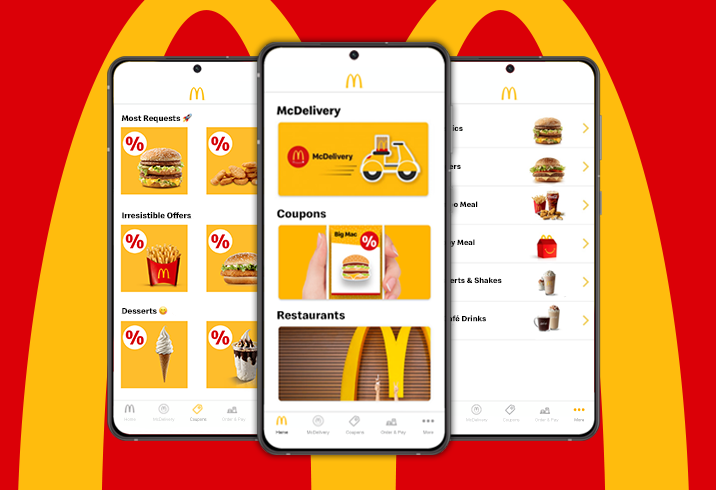

Leave a Reply